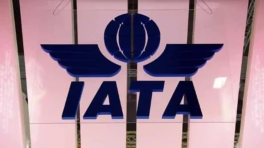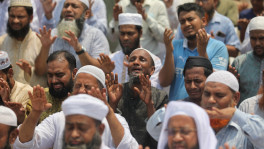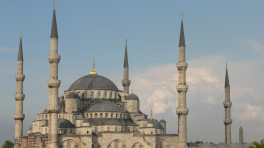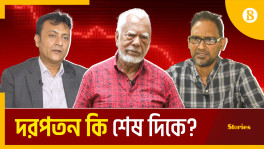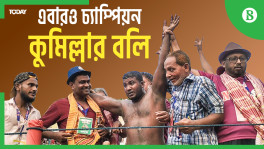The story of the first poem on Ekhushey
Mahbub-ul-Alam Chowdhury wrote the historic poem on 21 February 1952 in Chattogram which was recited at a large protest rally in Laldighi three days later.

21 February 1952 is a unique chapter in the history of Bengali national life which has been reflected in numerous literary works including poetry, short stories, novels and plays in the last 70 years. It has created a distinct genre in Bangla literary canon called Ekushey Shahitya. The first creation of this great Ekushey literature to depict the struggle of historic language movement is the poem "Kandte Ashini, Fanshir Dabi Niye Eshecchi" (I am not here to cry but to demand hanging) by Mahbul-ul-Alam Chowdhury.
The poet wrote this historical poem on that very night in Chattogram. He was a dedicated activist of the language movement and convener of the State Language Struggle Council, Chattogram, and secretary of the All-Party Struggle Council, Chattogram. He fell seriously ill before 21 February 1952 due to tireless work day and night with the firm intention of making the movement successful in Chattogram.
However, he was so engulfed with emotion that he forgot his physical condition and was looking for a pen and paper to write something. But it was not possible for him to write anything by his own as his hands were shaking due to high fever. So, he uttered the words and a dedicated activist of Marxist politics named Nanidhar wrote down them on a piece of paper. This is how the first poem of Ekushey was composed which is more powerful than a thousand bullets.
The intelligence department of the Pakistan government rushed to seize the poem before it came to light. On the night of 22 February, the detectives raided the Kohinoor Electric Press in Andarkella area of the city where the poem was being printed. But the police operation failed due to the efforts of the press workers. The poem was published on 23 February and recited by Chowdhury Harunur Rashid on 24 February at a large protest rally in Laldighi.
The power of the poem shook the Pakistan government. As a result, it was banned and an arrest warrant was issued against poet Mahbub-ul-Alam Chowdhury, reciter of the poem Chowdhury Harunur Rashid, publisher Kamaluddin Ahmed and printer Dabir Ahmed Chowdhury. Chowdhury Harunur Rashid and Dabir Ahmad Chowdhury were arrested.
As a result of the ban, the poem completely disappeared from public view for a long time. Professor Rafiqul Islam, while planning his book "Language Movement and Shaheed Minar", requested the poet to recite some words of the poem from his memory. The poet agreed and thus a part of the poem was printed in that book published in 1982. Six years later, Bangladesh Television invited the poet to say something about the poem. The poet said that his passion for the poem was a colorful tale of joy and sorrow. He said that the complete written form of the poem was lost.
However, Manzura Begum, a school teacher, was watching the television programme from her house in Dhanmondi. While the poet talked about the disappearance of the poem, she remembered that she had been preserving a copy of the poem for 35 years. She had got a printed copy of the poem from her sister-in-law Zobeda Haque who received it from her husband Mir Ashraful Haque.
On 26 February 1952, Mir Ashraful Haque, a police officer, found the banned poem during a raid in the Salimullah Muslim Hall of Dhaka University. He carefully hid the poem from there and gave it to his wife Zobeda to preserve the unique document of the Bengali nation. A few days later, Zobeda Haque, went to Laxmipur and kept the poem to Manzura thinking of the safety of their family and the poem. Manzura preserved the poem with absolute affection and infinite emotion.
After listening to the poet saying on television that the poem was lost, she delivered the poem to him which she was preserving for 35 years. Then in 1988, the full poem was reprinted in the poet's book of the same title "I am not here to cry but to demand hanging".
However, in 1983, the guardian institute of our literature and culture, could not publish the poem in its bilingual poetry anthology titled The Poetry of Ekushey as the poem was still missing. But when the anthology was first reprinted in 1992, the poem was included there with a terrible mistake. Of the 29 lines recovered from the memory of the poet by Professor Rafiqul Islam, verses one to 28 were printed on page 18 and the 29th verse was printed on page 22.
Besides, the title of the poem was given 'Ekusher Prothom Kabita' and in English 'The First Poem of Ekushey'. However, the anthology did not correct the mistake of the introduction of the poem which wrote that "the first poem of Ekushey is probably 'We have not come here to cry'". In 1999, the poetry anthology of Bangla Academy on Ekushey also did not follow the original form of the poem.
In 2002, Professor Zahurul Haque Chowdhury published an important book titled 'On the First Poem of Ekushey" based on the original historical form of the poem and the errors made by different editions included in different anthologies.
Many poems have been written on the historical event of 21 February since 1952 and some are more artistic than the first poem written by Mahbub-ul-Alam Chowdhury. However, the inner emotion and anguish that is portrayed in this poem along with a sense of collective consciousness of the nation for its struggle towards self-determination is unique. Not only that, the last stanza of the poem written in 1952 utter the dream of the country's independence which was realised in the Liberation War of 1971 through the leadership of Bangabandhu Sheikh Mujibur Rahman.
It is a matter of great regret that the original form of this great and historical poem has not been published by the Bangla Academy even today. Its anthology The Poems of Ekushey (1999) still contains the erroneous and distorted form of the poem. Eminent reciters, cultural personalities still recite the version of the poem collected by Professor Rafiqul Islam from the poet's memory at different programmes which even not a part of the original written edition of the poem.
Researcher Professor Zahurul Haque's three-decade recovery of the original poem of Ekushey today and the original and precise reading of the poem with the information about the poem and all the misconceptions. The Bangla Academy authorities have not changed their minds yet. The Bangla Academy has not taken any step to correct the mistakes even after the publication of the well-researched book on the poem which included the original version edited by the poet himself.
How long will this poverty of thought haunt us? Will we just continue expressing our grief over the distortion of our history?
Dr Ilu Ileas is the head of Bangla Department, Government Hazi Mohammad Mohsin College, Chattogram


 Keep updated, follow The Business Standard's Google news channel
Keep updated, follow The Business Standard's Google news channel



